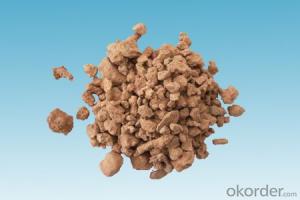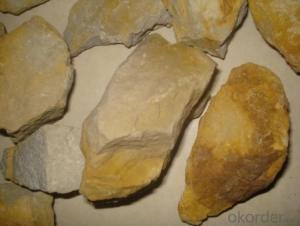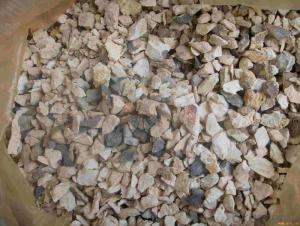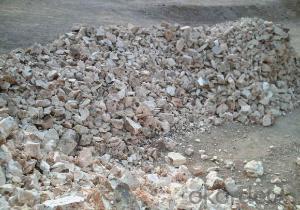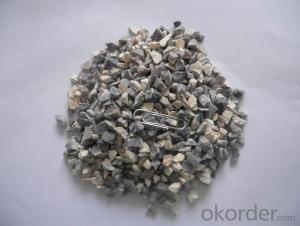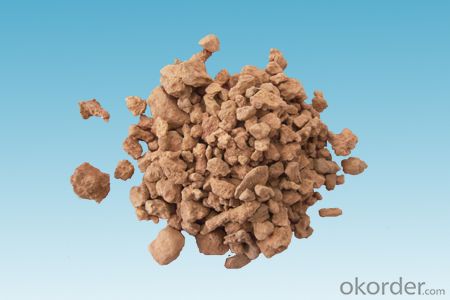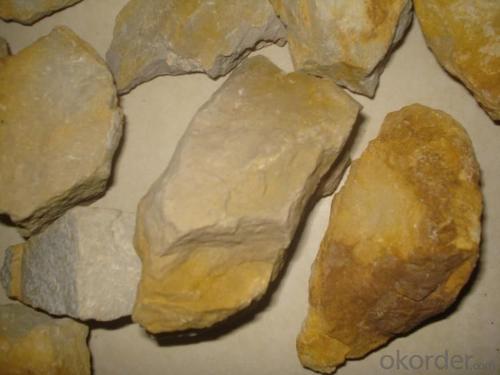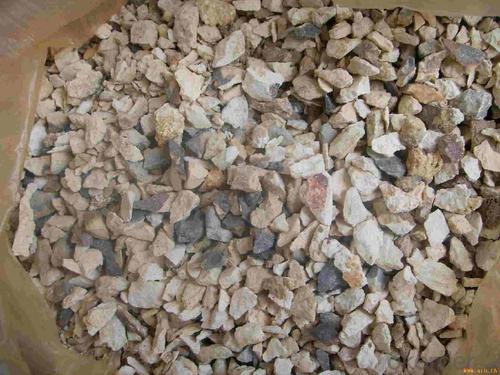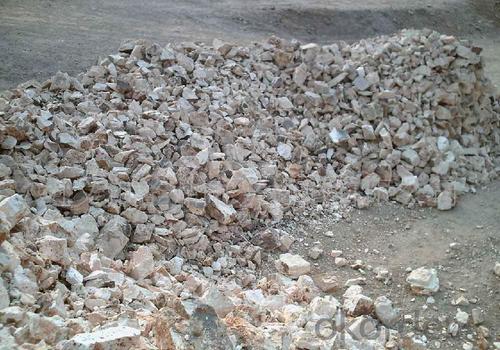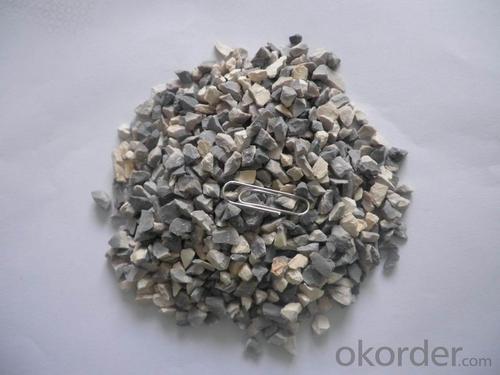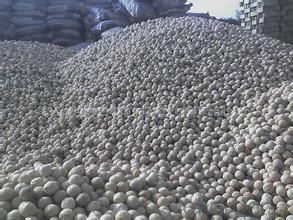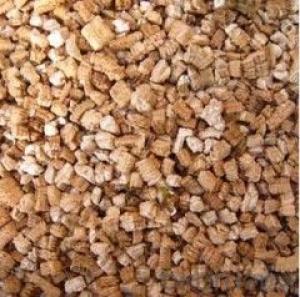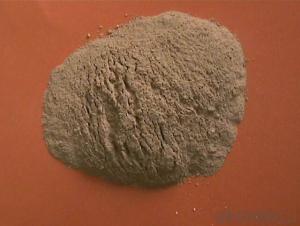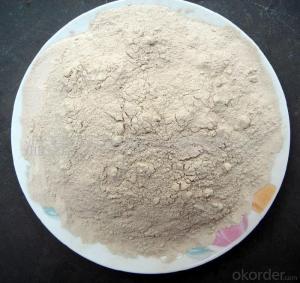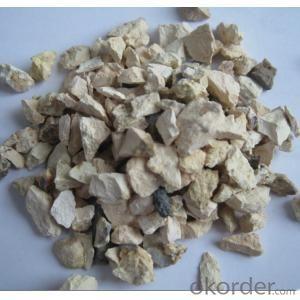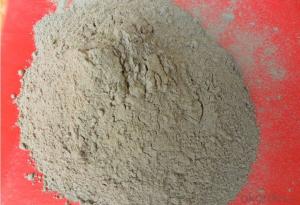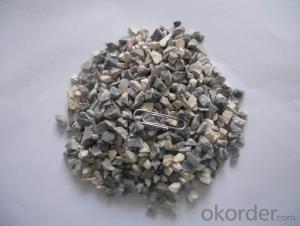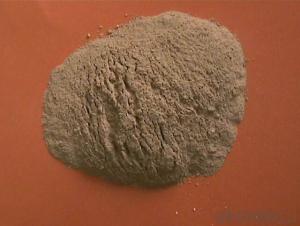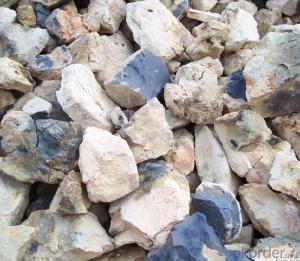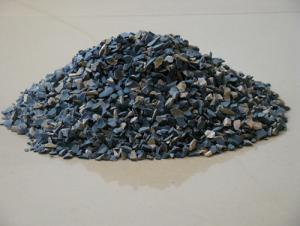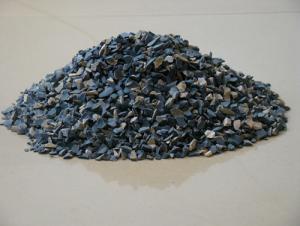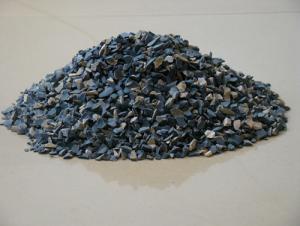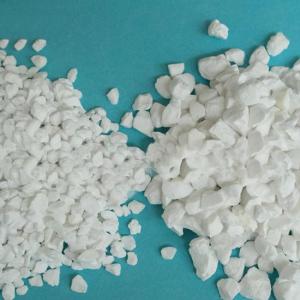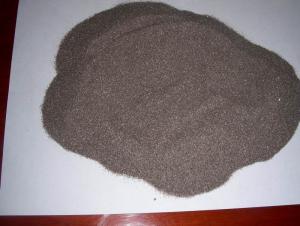Raw Materials for Refractory:Calcined Bauxite for Refractory Bricks of CNBM in China
- Loading Port:
- Tianjin
- Payment Terms:
- TT OR LC
- Min Order Qty:
- 11 m.t
- Supply Capability:
- 11111111 m.t/month
OKorder Service Pledge
OKorder Financial Service
You Might Also Like
1.Structure of Calcined Bauxite Description
Bauxite (aluminous soil; Bauxite) is also called the alumina or bauxite, main ingredients are alumina, hydrated alumina containing impurities, is an earthy mineral. White or gray, brown and yellow or light red by iron. From 4 to 3.9 g/cm3 density, hardness, 1 ~ 3 is not transparent, very brittle. Very difficult to melt. Insoluble in water, soluble in sulfuric acid, sodium hydroxide solution. Mainly used for aluminium, refractory material.
2.Main Features of the Calcined Bauxite
Calcined bauxite is one of the principal ore of aluminum. Calcined bauxite contains hydrous aluminum oxides and aluminum
hydroxides, formed through the laterization of aluminous rocks in tropical and subtropical areas .Calcined bauxite is obtained by calcining (heating)superior grade bauxite at high temperature (from 85OC to 1600C) .This removes moisture there.By increasing the alumina content,compared to an alumina content of about 57%to 58% in raw bauxite, calcined bauxite has an alumina content of 84%to88%.The heating is carried out in rotary kilns.
3.Main usage of the Calcined Bauxite
(1) aluminium industry. Used in national defense, aerospace, automotive, electronics, chemical industry, daily necessities, etc.
(2) precision casting. Alumina clinker made after the mould precision casting processed into fine powder. Used in military industry, aerospace, communications, instrumentation, machinery and medical equipment department.
(3) is used for refractory products. High bauxite clinker refractoriness is as high as 1780, chemical stability strong, and good physical properties.
(4) aluminum silicate refractory fiber. With light weight, high temperature resistance, good thermal stability, low thermal conductivity, heat capacity is small and the advantages of resistance to mechanical shock. Used in iron and steel, nonferrous metallurgy, electronics, petroleum, chemical, aerospace, atomic energy, defense and other industries.
(5) in magnesia and bauxite clinker as raw materials, add the appropriate binder, used for pouring ladle whole ladle lining has particularly good effects.
(6) manufacture alumina cement, abrasive materials, ceramic industry and chemical industry can be aluminum of various compound.
4. Calcined Bauxite Images
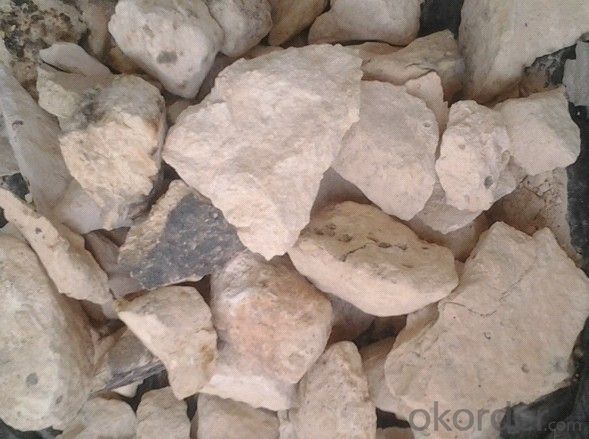
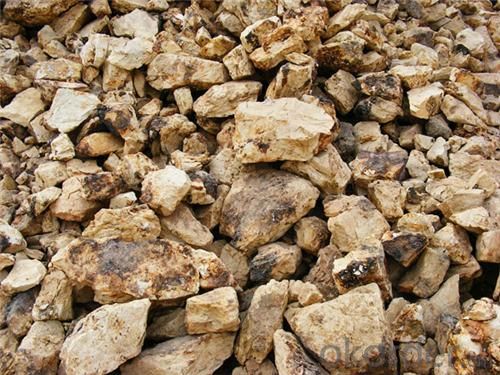
5. Calcined Bauxite Specification
Refractory Bricks magnesia chrome bricks are mainly made from sintered magnesia and chrome-oxide after high pressure shaped.Refractory Bricks magnesia chrome bricks are mainly made from sintered magnesia and chrome-oxide, by high pressure shaping and high temperature firing. According to different requirements, the contents of the Cr2O3 can be changed.
item\index | MGe-8 | MGe-12 | MGe-16 | MGe-20 |
MgO,% ≥ | 60 | 55 | 45 | 40 |
Cr2O3,% ≥ | 8 | 12 | 16 | 20 |
Apparent porosity % ≤ | 21 | 21 | 23 | 23 |
Cold crushing strength,MPa ≥ | 30 | 30 | 30 | 30 |
0.2MPa the load softens the beginning temperatur/°C ≥ | 1530 | 1550 | 1550 | 1550 |
Heat shock resistance(950°C air cooling),each ≥ | Provide the data | |||
6.FAQ of Calcined Bauxite
1). Q: Are you a factory or trading company?
A: We are a factory.
2). Q: Where is your factory located? How can I visit there?
A: Our factory is located in ShanXi, HeNan, China. You are warmly welcomed to visit us!
3). Q: How can I get some samples?
A: Please connect me for samples
4). Q: Can the price be cheaper?
A: Of course, you will be offered a good discount for big amount.
- Q: what's the seal of fireproofing material?
- Folded organic putty takes organic material as bond,it has certain flexibility or plasticity while using, and it's products are thick liquid or cement shaped object. Folded WXY-II is powered?solid that takes inorganic materials as main components, it has certain workability while used with admixture. Folded fire retardant bag is the packaged object made by fireproofing material, and it's suitable for fireproofing seal of larger openings or fire separation of cable?bridge(fire retardant bag also refers to fireproof bag) Folded fire retardant module is the solid made by fireproofing material with certain shape and size, and it is easy for cutting and drilling, suitable for fireproofing seal of opening and cable?bridge. Folded seal board is made by fireproofing material, it's easy for cutting and drilling, suitable for fireproofing seal of large opening. Folded foam seal is a kind of fireproofing material that can automatically expand and foam and sealed by opening after injecting the foam into opening. Folded sealing strip is a product or flexibility coiled material mede by fireproofing material with certain geometry shape. Folded sealing gum is a kind of liquid fireproofing material that has a function of fireproofing and sealing. Folded fire retardant bag is soft and windable tape-shaped product made by fireproofing material, it is winded on the external surface of plastic pipe and fixed with steel belt or other proper methods, it's the expansion, squeezing and softening pipe after contacting with fire, opening left by burning or soften of seal plastic pipe. Folded fire retardant ring is the product made by fireproofing material and metal shell, it's covered on the external surface of the plastic pipe, expanding and sealing after contacing with open fire, the opening left by burning and soften of plastic pipe when it passes through the opening of wall and floor.
- Q: What is acid refractory material?
- Many kinds of refractory materials, usually by refractoriness level is divided into ordinary refractory materials (1580 to 1770 DEG C), advanced refractories (1770 to 2000 DEG C) and special refractories (more than 2000 DEG C); according to the chemical characteristics into acid refractory material, refractory materials and basic refractory materials. In addition, there are refractories for special occasions. Acid refractory with silicon oxide as the main component, are commonly used in brick and clay brick. Silica is silica containing more than 93% silica products, raw materials used in silica, silica and other waste, the acid resistance of slag erosion ability, high load softening temperature, volume shrinkage after repeated burning, or even a slight expansion; but it is vulnerable to the erosion of basic slag, low thermal shock resistance. The brick is mainly used for thermal equipment of glass furnace, coke oven, acid furnace etc.. Clay brick with refractory clay as the main raw material, containing 30% to 46% of alumina, weak acid refractory material, heat shock resistance, resistance to acid slag, widely used. Neutral refractory is mainly composed of alumina, chromium oxide or carbon.
- Q: Is there requirement for radiation indicator in refractory?
- All refractories have no radiated harm to environment, so there is no requirement. From the elemental analysis, magnesite. I do not know it is helpful to you. But for refractory rwa material, any chemical element is radiated, including silicon?dioxide; If they are radioactive. From the use analysis, such as bauxite, do not have use value.
- Q: What are the insulation fireproofing materials?
- Insulated shoes, insulated gloves, tape (cloth, plastic, as well as waterproof) yellow wax tube, mouth care, fireproof (ie asbestos cloth is sold by jin) there is pressure-caps black tape, waterproof tape ,casing. There are glass fiber needle felt is widely used in electrical, chemical, construction, transportation, automotive and other industries interlayer insulation and silencer system, and used as an insulating fireproof material.
- Q: The following statement is correct: artificial corundum has a high melting point and can be used as a high grade refractory material. The main component is silica dioxide
- 1. corundum is the main component of alumina. 2. agate is the main component of silica. 3. is right. 4. glass is silicate. 5. solar cells are made from monocrystalline silicon. So 3.5 correct, choose D.
- Q: What is the main material of fireproof wooden door?
- Fireproof door is an important part of fire-fighting apparatus and society fire prevention, so the quality and use of fireproof door is the key to the success of the fire prevention. Some customers don't know clearly that whether the fireproof door should install a door closer. Today I specially read the explanation of relevant state departments for fireproof door, in the explanation in 5.3.3, fireproof door should be installed fireproof door closer or set, so that normally open fireproof door can automatically close close-door device of the door leaf (except for the use of special parts, such as pipe shaft doors, etc.) in the event of a fire. In other words, except for some special parts which don't need to be installed door?closer, such as pipe shaft doors, other parts are required to install fireproof door closer.
- Q: What kind of refractory decorative board has good quality?
- Baby Rabbit has excellent refractory decorative board. It once won the Chinese famous brand, and was awarded iconic brand in plywood industry and the most influential integrated service providers of indoor decoration materials . Fireproof?panel is made from body paper(titanium coated paper, kraft paper) in high temperature and pressure through impregnation technology of melamine and phenolic resin. Refractory door slab is made by sticking fireproof?panel on base materials such as density board or chipboard.
- Q: Who knows the fire endurance of B-level fireproof doors and windows?
- Rock wool board of B-grade fireproof doors keeps 46mm in thickness, doors that are generally used in relatively common fire fighting access, while A-grade fireproof doors are generally used in machine rooms, warehouses, oil depots and other important fire fighting access and flammable and combustible pulbic places. B-grade fireproof doors are more widely used than A-grade fireproof doors.
- Q: What are the additives and recipes of refractory?
- Add FDN.
- Q: How to divide the fire resistant level of construction thermal insulation materials?
- How to divide the fire resistant level of construction thermal insulation materials: Combining three versions of GB8624 (1997,2006,2011) external wall thermal insulation fire?rating can be basically divided into: A1, A2, B1, B2, B3 and other levels. There are many technical indexes for specific division, very professional and technical, so it is hard to say clear now. For details, please contact Qingdao Shanfang Instrument Company who is specialized in fire?rating tester for external wall thermal insulation materials.
Send your message to us
Raw Materials for Refractory:Calcined Bauxite for Refractory Bricks of CNBM in China
- Loading Port:
- Tianjin
- Payment Terms:
- TT OR LC
- Min Order Qty:
- 11 m.t
- Supply Capability:
- 11111111 m.t/month
OKorder Service Pledge
OKorder Financial Service
Similar products
Hot products
Hot Searches
Related keywords
